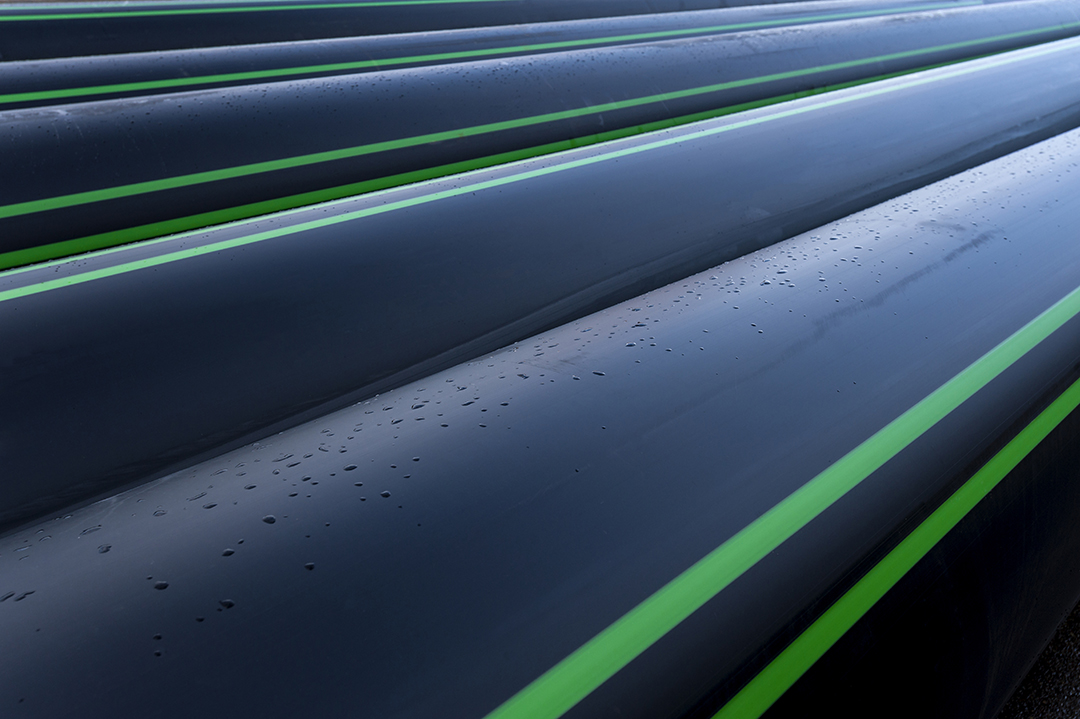High-density polyethylene pipe has transformed the landscape of industrial and infrastructure projects since its introduction in the mid-20th century. This versatile material has steadily gained prominence in various applications, from agricultural drainage to stormwater management and beyond. As the demand for efficient, durable, and cost-effective piping solutions continues to grow, understanding the evolution and benefits of HDPE pipes is critical for industries that rely on robust infrastructure.
HDPE Origins and Early Growth
High-density polyethylene pipe emerged from the development of polyethylene (PE), a thermoplastic resin first manufactured in 1933. Over the next 20 years, petrochemical industry chemists worked to improve manufacturing processes and create better grades of the material. The pivotal moment in the material’s development came in the early 1950s when Phillips Petroleum Company chemists developed an economical method to produce HDPE.
This breakthrough enabled the creation of various PE grades, broadening its use across numerous products and applications. HDPE first found commercial success in baby bottles, quickly proving itself as a safer, more durable, and cost-effective alternative to glass. This initial success laid the groundwork for HDPE to replace traditional materials in many applications, demonstrating its enhanced physical properties and versatility.
Expanding into Industrial Applications
The 1950s marked the introduction of solid-wall HDPE pipe in oil and gas gathering systems, replacing metal pipes. Gas utilities began adopting PE pipe in the early 1960s to replace deteriorating iron pipes. These critical applications paved the way for widespread adoption, with PE pipe now used in 95% of new gas distribution systems.
Simultaneously, corrugated HDPE pipe gained traction in agricultural drainage systems, replacing clay pipes that had been the industry standard for centuries. This transition signaled the start of HDPE’s prevalence in various piping applications, leading to its use in larger diameter pipes for stormwater culverts and other infrastructure projects.
Advancements in HDPE Pipe Technology
HDPE pipe technology has come a long way since its early days. Over time, researchers and engineers have made steady improvements to the material’s performance. Modern pipe-grade HDPE is now a carefully engineered product, built to last in demanding environments. Before it’s used in manufacturing, the material goes through thorough testing to ensure it meets high standards for reliability and durability.
Material Properties and Benefits of HDPE Pipe
HDPE pipe offers a unique combination of properties that make it ideal for a wide range of applications:
- Corrosion and chemical resistance;
- Flexibility and impact resistance;
- Lightweight yet strong;
- Low friction coefficient for improved flow;
- Resistance to biological attack and tuberculation; and
- Long service life.
These properties translate into significant benefits for end-users, including reduced maintenance needs, lower installation costs, and improved long-term performance of piping systems.
HDPE Pipe Applications Across Multiple Industries
The versatility of HDPE pipe has led to its widespread adoption across various sectors. Its unique combination of durability, chemical resistance, and cost-effectiveness has made it an attractive option for diverse applications. As industries seek more efficient and long-lasting infrastructure solutions, HDPE pipe continues to gain traction in new markets.
Water and Wastewater
HDPE pipe has become a preferred solution for water distribution and sewer systems. Its corrosion resistance ensures long-term integrity, even in aggressive soil conditions or when exposed to harsh chemicals. The leak-free fusion joints of HDPE pipes prevent infiltration and exfiltration, protecting water quality and preventing groundwater contamination. Additionally, the flexibility of HDPE allows for trenchless installation methods, reducing construction costs and environmental impact in urban areas.
Stormwater Management
Large-diameter corrugated HDPE pipes have transformed stormwater management systems, offering superior performance compared to traditional concrete or metal culverts. The smooth interior of HDPE pipes allows for improved flow capacity, reducing the risk of blockages and flooding. Their lightweight nature simplifies installation, especially in challenging terrain. HDPE pipes also resist abrasion from sediment-laden stormwater, ensuring a longer service life and reduced maintenance needs.
Industrial and Mining
The chemical resistance and durability of HDPE make it highly suitable for harsh industrial environments. In mining operations where abrasive slurries are common, HDPE pipes outperform traditional materials by resisting wear and maintaining their structural integrity. The material’s flexibility allows it to withstand ground movements without cracking, a crucial feature in dynamic mining environments. Furthermore, HDPE’s resistance to scale buildup ensures consistent flow rates over time, reducing the need for frequent cleaning and maintenance.
Agriculture
HDPE pipe continues to dominate agricultural drainage systems, with studies showing significant increases in crop yields in properly drained fields. The corrosion resistance of HDPE ensures that drainage systems remain effective for decades, even in acidic soils. The smooth interior of HDPE pipes facilitates efficient water flow, preventing clogging from soil particles and root intrusion. Moreover, the flexibility of HDPE allows for easy installation in varying terrains, making it possible to optimize field drainage patterns for maximum agricultural productivity.
Innovations in Joining and Installation
As technology advanced, so did the methods for joining and installing HDPE pipes. Early joining mechanisms relied on simple banding couplers, but the industry quickly developed more sophisticated solutions:
Bell-Bell Coupling Systems
Developed in the 1980s, these systems provided higher-integrity joints, particularly useful in sanitary sewer applications.
Integral Bell and Spigot Joints
This joining method became the most common for dual-wall corrugated HDPE pipe, offering ease of installation and reliable performance.
Extended Inner Sleeve Couplers
The latest generation of couplers features an extended inner sleeve, providing more engagement between pipe sections. This design is particularly beneficial in applications requiring watertight integrity and field verification testing.
These advancements in joining technology have contributed to the increased adoption of HDPE pipe across various applications, making installation faster, more reliable, and more cost-effective.
Partner with Us for Your HDPE Pipe Supplier
As HDPE pipe use has grown across multiple industries, the Coastal Resource Group has become a key supplier of pipes. Known for fast delivery and 24/7 availability, we ensure your projects stay on track, even in remote locations. Our extensive inventory and expertise make us ideal for a wide range of sectors, including chemical processing, construction, food and beverage, mining, oil & gas, and water treatment facilities.
Our swift, reliable service supports both large-scale projects and quick replacements. With our comprehensive supply chain and deep understanding of HDPE pipe applications, we guarantee access to the right products when you need them.
For HDPE pipe solutions and other industrial supplies, contact us at (281) 549-4132. Our experts are ready to provide quotes and help select the right HDPE pipe for your specific needs, to keep your projects moving forward efficiently.


